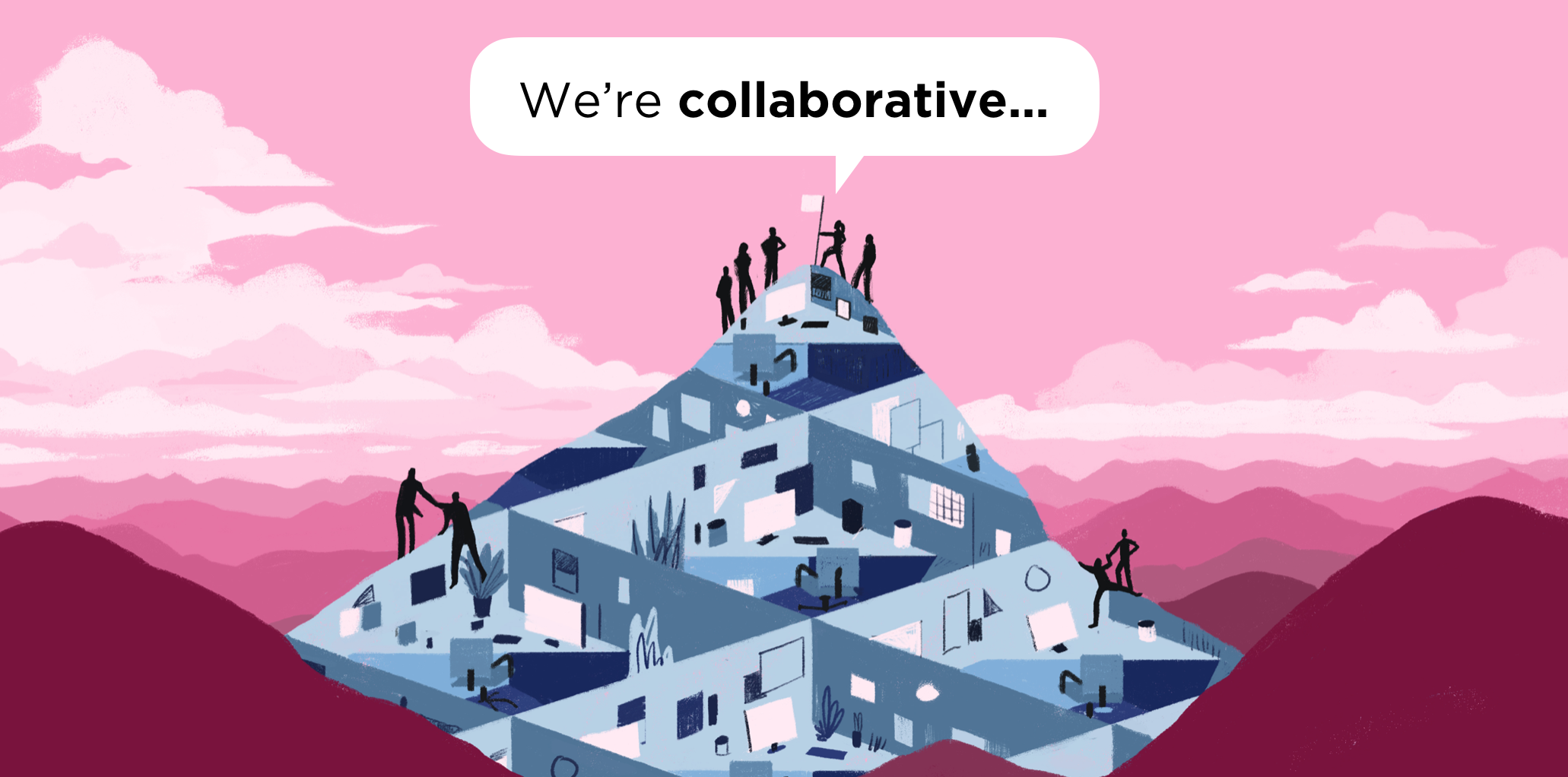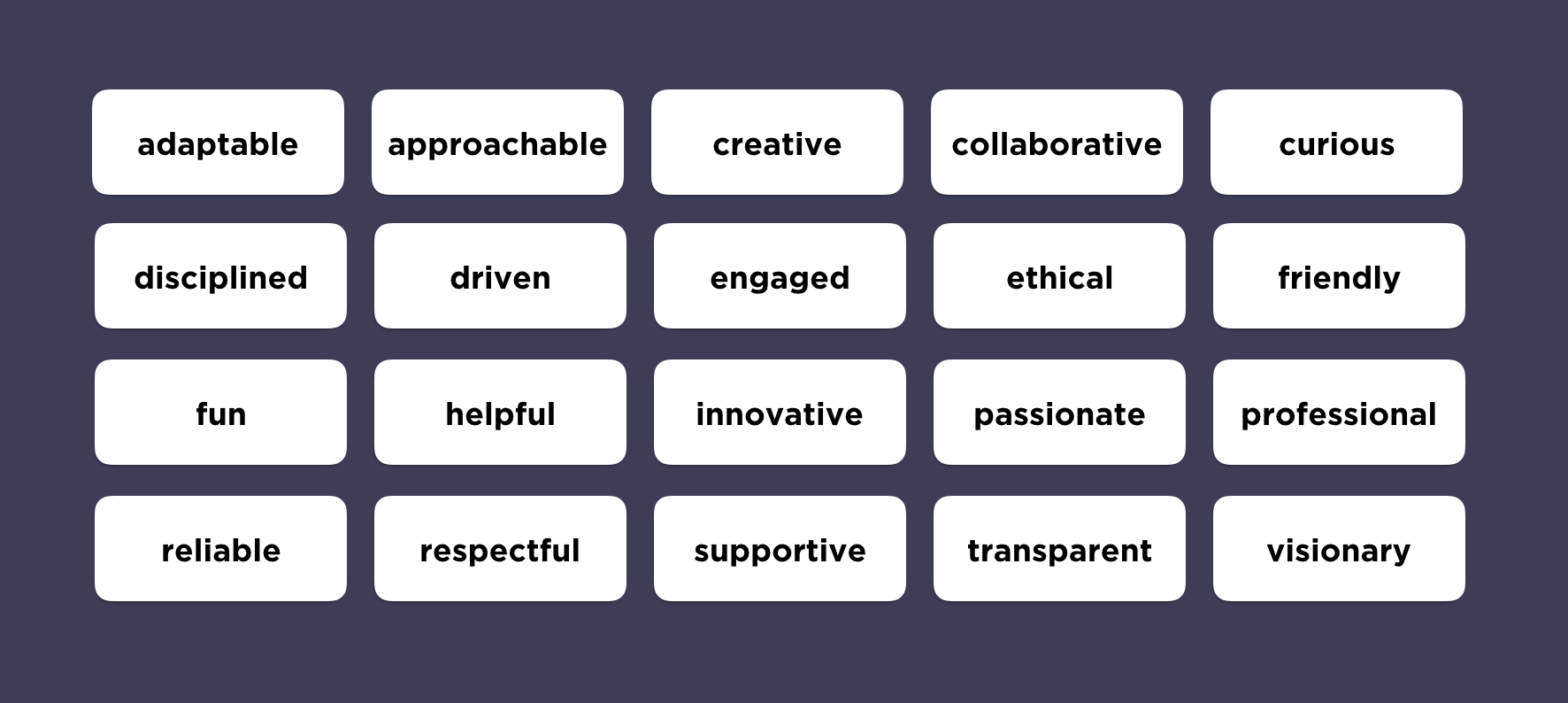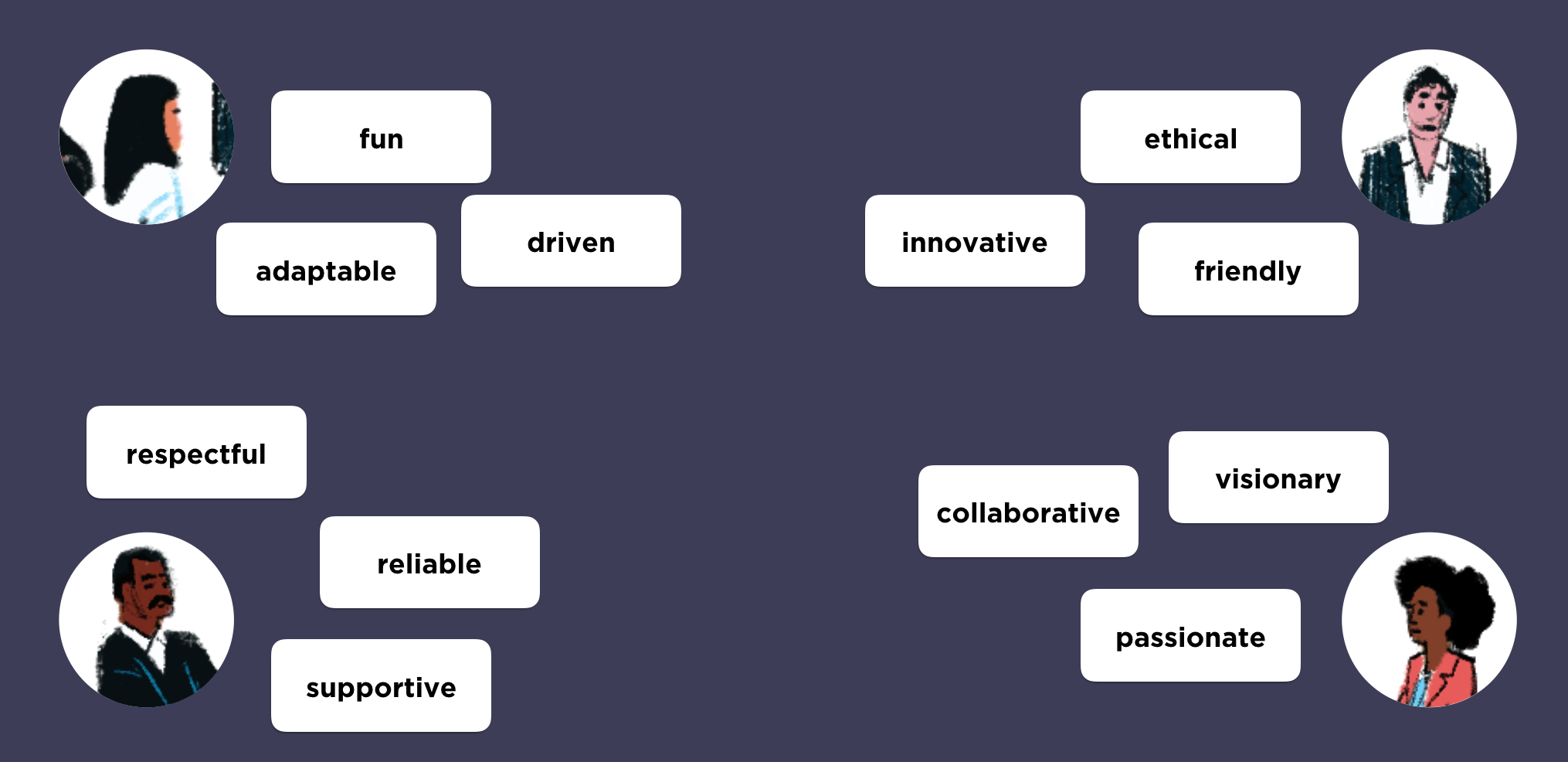Ritual: What Do We Value as a Team?
This activity will help your team align on the values and behaviors that are unique to them.
Download the activity instructions and diagram here as a PDF.
Illustration by Ryan Johnson for Ask The Sherwins, LLC
If you want to reduce team misalignment from the start, close the gap between what people say they value and how they demonstrate those values through their everyday actions.
Words are powerful—so powerful that most of the problems we encounter are failures of vocabulary. We assume that everyone uses the same words and that they mean the same things to everyone.
For example, think about the word supportive. How do you see that word in how your team works together? How do your coworkers see it? Have you ever sat down with your team and talked about that? People see their values in behaviors, in what people do. But when people come together in teams, they typically revert to abstract or fluffy words to describe how they want to work and leave the specifics for later.
It usually isn’t hard for team members to agree on what values are important to them: creative, innovative, collaborative. Within an hour or two of dialogue, most teams can find common ground and create basic working definitions to explain which values matter to them and why.
But from there, it can be hard for team members to be specific about what tangible behaviors they’ll demonstrate as they put those values into action. Many teams say they value transparency or promise to be ethical or respectful, but when things go poorly, they use those words as weapons. They don’t allow team members to address underlying behaviors. It’s difficult to help each other improve as professionals when tough conversations start with “This team isn’t creative enough” or “You don’t respect me.”
This ritual can help your team align and define behaviors that are unique to them. These behaviors will become your working norms as a team. We recommend using this activity with teams that will be working together for longer periods of time, from three months to several years. We also recommend periodically revisiting this ritual. Values change slowly, but the ways that we express them can shift quickly.
To prepare for this activity, have a stack of index cards or sticky notes, as well as a whiteboard or a large sheet of paper on hand. Some teams prefer to use physical notes or paper, while remote teams might use shared documents or virtual whiteboards to achieve the same results. You could even use our Teamwords deck, a tool we designed for situations just like this.
1. Identify your team’s working values
If you’re in an in-person meeting, hand out sticky notes or index cards to your team members. If you’re in a remote meeting, set up a shared document that everyone can work in. Have them individually write down three words that describe how they like to work with others on a team. Some of the words that we see come up most frequently are:
If team members ask for formal definitions of the words, let them know that this activity is about how these words are defined by them individually, not by others on the team.
2. Share your value words
Ask each person on your team to share their value words and explain why they chose them.
3. Decide on three values for your entire team
As a team, each person votes for three words that represent their most important values. The entire team has to agree on those three words.
4. Describe what behaviors you want from your teammates
Ask each person to take at least ten minutes to write down specific behaviors they would want to see from each other, if they were putting those three values into practice. Use the following questions as prompts:
If we say that we’re [value word], what behaviors are we doing to show that?
This question helps people reflect on all of the different behaviors they currently have with their teams. It also helps them identify which of the more positive behaviors they want to continue using with their team.
If we want to be more [value word], what behaviors can we bring into our work?
These are new behaviors people want to introduce to the team. Since they aren’t currently being displayed by team members, these behaviors may take more time and effort to put into practice.
Behaviors should be tangible actions that the team can reference. Each behavior must be associated with a value word. For example, “I want us to give each other feedback on our work regularly” isn’t specific enough, because regularly for one person might be every two days, while another team member thinks that once a month is fine. Instead, try: “We will meet every Thursday for an hour to share work in progress, and each team member will receive five minutes to provide focused feedback on how their work could be improved.”
5. Decide what behaviors the team will take on
Set up this ritual’s diagram in a location that all of your team members can see.
One at a time, each person shares the behaviors they’ve identified. Place them under the appropriate value word in the diagram. Then, as a group, prioritize which behaviors everyone wants to carry forward that could have the most impact based on them happening every day, every week, or every month.
When you’re done, make sure to place the output of the ritual where everyone can reference it throughout the project, especially if the team wants to make changes.






